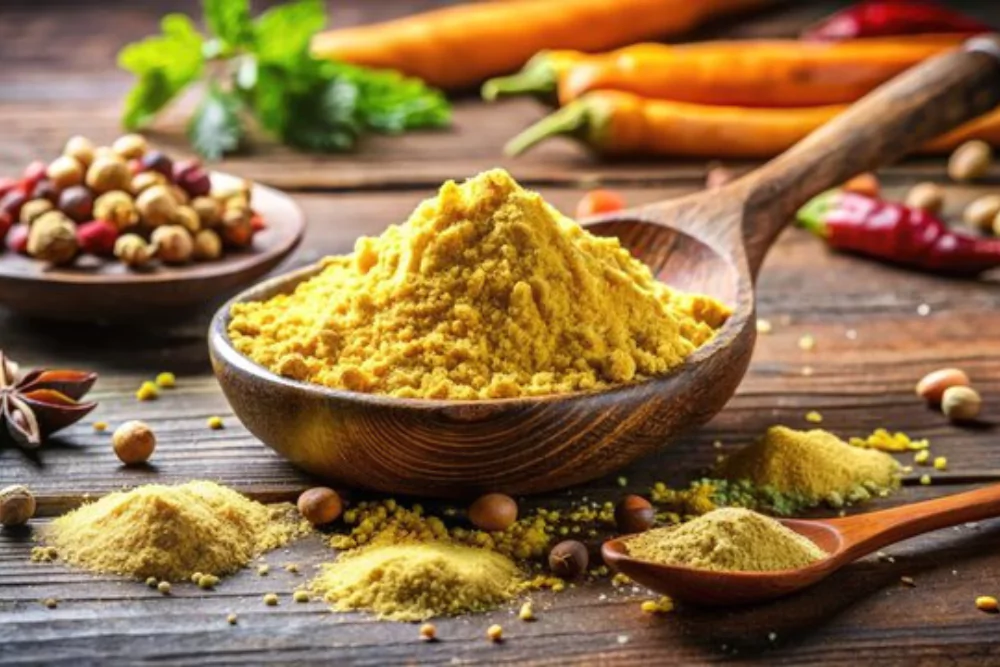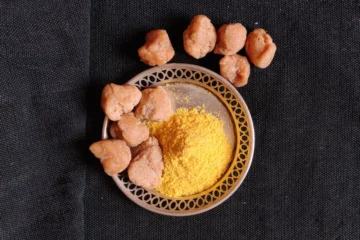Why is asafoetida considered essential in Jain and South Indian cooking?
Short Answer: Asafoetida enhances flavor, serves as a digestive aid, and replaces garlic and onion in Jain cuisine while adding depth to South Indian recipes.
Long Answer:
- Asafoetida introduces a unique umami flavor, vital for crafting distinct tastes in traditional recipes.
- Its digestibility properties have made it a staple in meals that require a balance between health and flavor.
- Jain cuisine excludes garlic and onion due to ethical reasons, and asafoetida provides a suitable replacement for these ingredients.
- South Indian dishes like sambhar, rasam, and chutneys rely on asafoetida for their characteristic taste and aroma.
- It complements other spices, ensuring a harmonious blend in both mild and spicy dishes.
Are there any health benefits of using asafoetida in traditional recipes?
Short Answer: Asafoetida aids digestion, reduces inflammation, improves respiratory health, and supports overall wellness.
Long Answer:
- It stimulates digestive enzymes, making meals lighter and reducing acidity and bloating.
- Asafoetida is known for its antimicrobial properties that support gut health and reduce the risk of infections.
- Rich in anti-inflammatory compounds, it alleviates joint pain and reduces swelling.
- Helps clear respiratory passages, benefiting individuals with asthma, bronchitis, or common colds.
- Contains potassium, which supports blood pressure regulation and improves heart health.
What makes asafoetida a suitable substitute for garlic and onion in Jain cuisine?
Short Answer: Asafoetida mimics the flavor profile of garlic and onion while aligning with Jain dietary practices and ethical guidelines.
Long Answer:
- Provides a sharp, aromatic flavor that is reminiscent of garlic and onion in cooked dishes.
- Ensures adherence to Jain principles that exclude root vegetables from their diet for ethical reasons.
- Offers a plant-based, cruelty-free alternative that aligns with Jain philosophies of nonviolence.
- Allows chefs to maintain traditional taste profiles in recipes without compromising ethical values.
- Its versatility in enhancing dishes without overpowering the flavor makes it a preferred choice in Jain cooking.
How is asafoetida typically used in South Indian dishes like sambhar or rasam?
Short Answer: Asafoetida is added during tempering in South Indian recipes like sambhar or rasam to impart its distinct flavor and aroma.
Long Answer:
- It is dissolved in hot oil or ghee alongside mustard seeds, curry leaves, and red chilies during tempering.
- Its aromatic compounds infuse the dish, creating a rich and earthy flavor profile.
- Balances the sourness of tamarind-based dishes like rasam, adding depth and complexity.
- Contributes to the hearty taste of lentil-based dishes like sambhar, elevating them to perfection.
- Used sparingly to ensure that its intense aroma complements rather than overshadows other ingredients.
Where can I find authentic, high-quality asafoetida for traditional recipes?
Short Answer: Specialty stores, local markets, and trusted online platforms offer premium-quality asafoetida for authentic recipes.
Long Answer:
- Explore specialty spice stores that stock traditional Indian condiments, including asafoetida.
- Online platforms like Amazon and Flipkart provide access to diverse brands, customer reviews, and detailed product information.
- Look for brands that emphasize purity and minimal additives to ensure the highest quality.
- Visit local markets in regions known for authentic Indian cuisines for fresh, premium-grade asafoetida.
- Prioritize products labeled organic or natural to align with health-conscious cooking practices.
Conclusion
Asafoetida stands as a cornerstone of Jain and South Indian cuisine, embodying both culinary artistry and ethical values. With its ability to replace garlic and onion while providing unparalleled taste, asafoetida bridges tradition and functionality. Its numerous health benefits further elevate its importance, making it an indispensable spice for health-conscious and ethical cooking alike.
Whether you’re crafting a Jain-friendly recipe or perfecting South Indian classics like sambhar and rasam, asafoetida deserves a special place in your kitchen. Its versatile use and accessibility ensure that everyone can enjoy the remarkable taste and benefits of this unique spice. As one of India’s treasured culinary gems, asafoetida continues to enrich kitchens worldwide.





